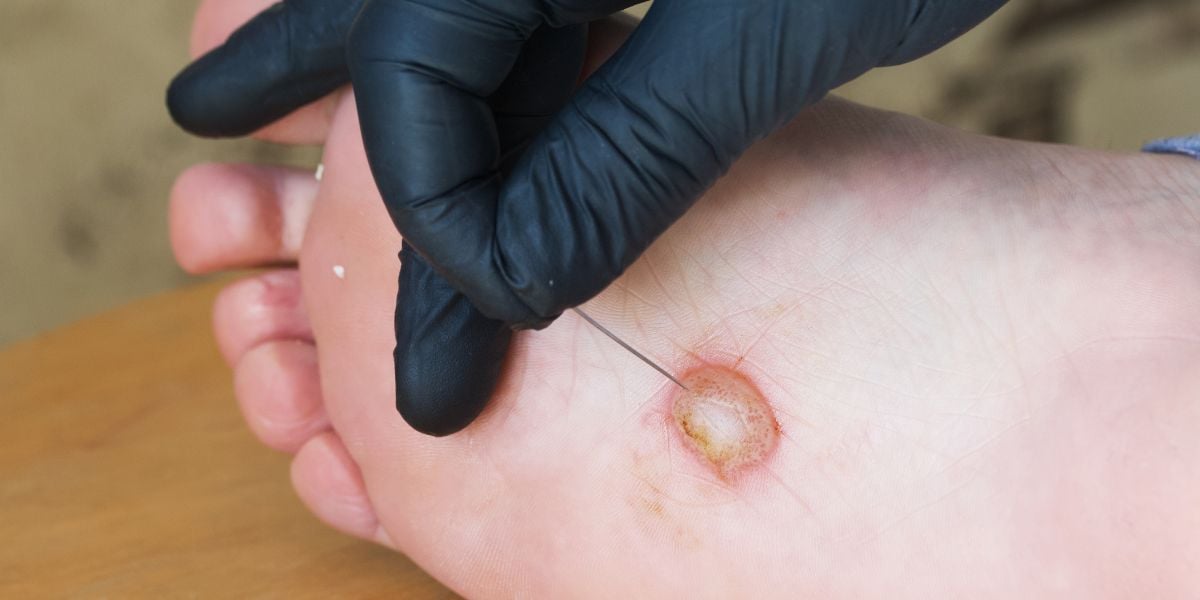A quarter of American seniors suffer from diabetes, a chronic illness that causes a multitude of complication. According to a worrying statistic 10% to 15% people with diabetes are afflicted with ulcers on the feet and legs. If they are not treated, the wounds can be so serious that diabetic foot amputations could be required. In fact, nearly 80 percent of the amputations result from foot ulcers, underscoring the necessity of taking care to provide prevention and care.

The management of diabetes is a multifaceted problem that requires a holistic approach that goes beyond the control of glucose. In this effort, daily foot hygiene is crucial to avoid amputations due to diabetes.
Understanding the Landscape
Diabetes and its complications create an arduous terrain to navigate. The adversity of leg and foot ulcers in diabetics highlights the need for proactive medical care. The numbers are shocking and it is evident that knowing the complexities of these conditions is essential in fighting against amputations.
The Amputation Conundrum
The risk of losing limbs is always on the horizon for diabetics. It’s a fact that goes beyond mere statistics, affecting individuals on a very personal scale. The process of transforming a minor foot ulcer to the threat of amputation of the diabetic foot is a harrowing one, emphasizing the necessity of preventative measures.
Daily Footcare: A Shield against Amputation
The foundation of diabetes amputation prevention lies in daily foot care. This goes beyond an everyday foot care routine. It’s a systematic practice to identify and address problems before the problem grows. Each step in this daily routine is strategic in the fight against diabetes-related amputations.
Vascular Specialists: What is Their Function
While vascular specialists aren’t able to directly deal with diabetes, their expertise plays a pivotal role in minimizing the issues related to the condition. Making sure that the blood flow is optimal to the lower extremities becomes an essential aspect of treatment in reducing pain in the legs and aiding in healing wounds. This team approach is geared towards achieving one goal of reducing the chance of diabetes-related amputations.
Strategies for Preventing Amputation
Navigating the labyrinth of amputations in diabetes requires a mix of awareness, vigilance and skilled intervention. It is essential for those with diabetes to adopt a proactive approach. Regular checkups, with doctors, such as specialists in vascular surgery, can help with early detection.
Understanding the Triggers: Leg Ulcers and Beyond
Leg ulcers, which are often precursors to more serious complications, need attention and understanding. Recognizing the triggers that lead to the formation of leg ulcers is a crucial step. Recognizing the root cause, whether it is poor circulation, neuropathy, or an amalgamation, allows for specific and targeted treatment.
Education as empowerment
Empowering individuals with diabetes with awareness of the risks and prevention measures is crucial. Initiatives to educate, both within healthcare facilities and in the general community, can make the difference between awareness and actions. Recognizing the significance of seemingly harmless wounds can initiate prompt action, possibly helping to avoid the need for diabetic foot amputation.
Private battles, collective triumphs
Amputations related to diabetes is not a solely a single struggle, but a societal victory. Engaging in the support networks of healthcare providers or communities, can provide an opportunity to share experiences, insights and coping strategies. The emotional burden of facing dangers of amputation is immense and a sense of belonging can offer comfort and strength.
Conclusion: The path to ulcers, diabetes and the threat of amputation are multi-faceted. Regular foot care is the initial step to protect yourself. Vascular experts’ experience can be an benefit to reducing the severity of the effects. Diabetes patients can reduce the likelihood of amputations by increasing awareness, taking preventive measures and cultivating the support system.
